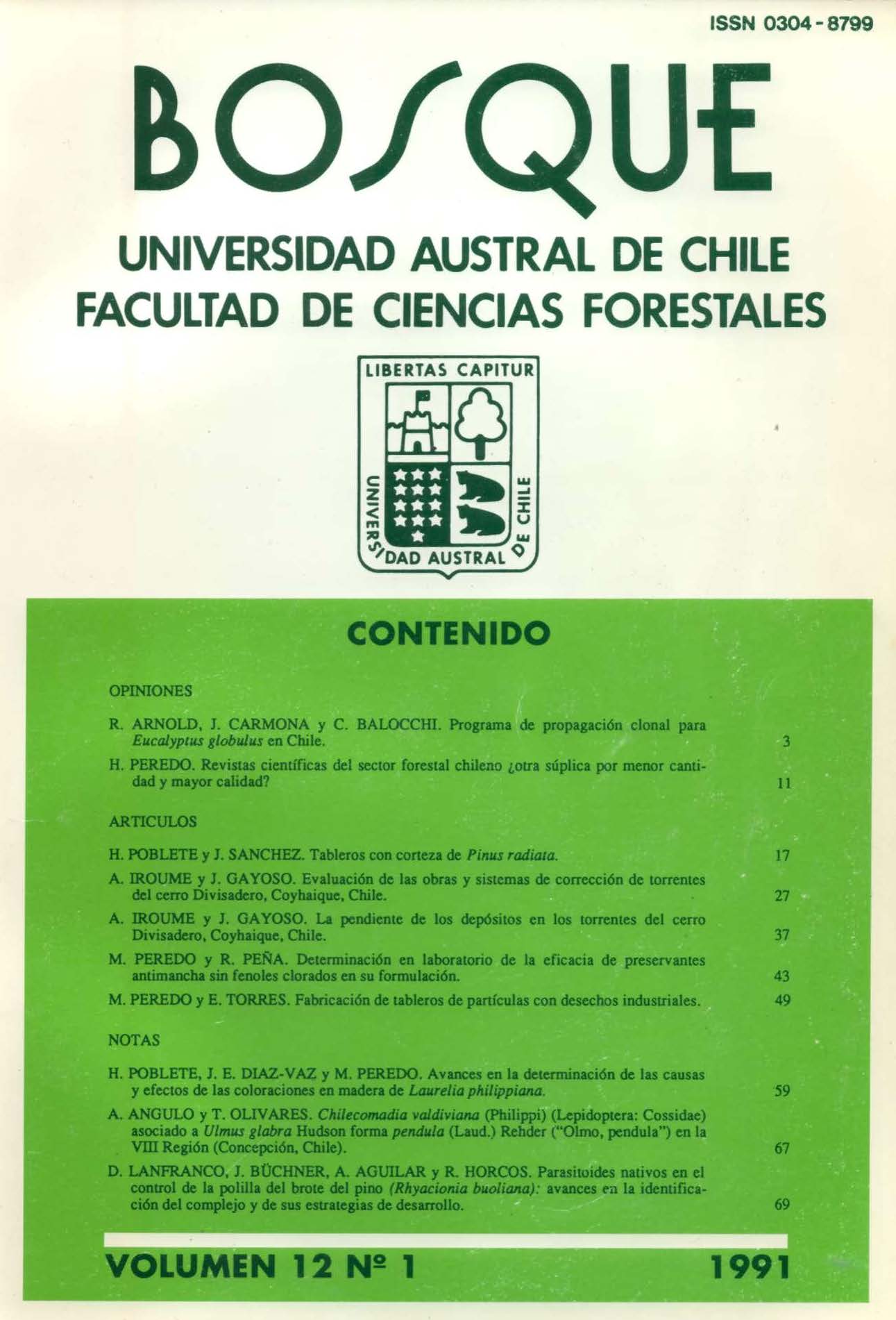Native parasitoids in the pine shoot moth control (Rhyacionia buoliana): advances in the identification of the complex and its development strategies
Main Article Content
Abstract
After the 1985 detection of Rhyacionia buoliana in Chile, research concerning the species biology, the symptomatology, control, as well as an economic evaluation of the damage it causes, has been carried out. This, due to the great number of plantations that require protection and the distribution and high population density of the species, specially in young plantations of the X region. Results of the research have led to diverse control strategies of which, the biological control program is the most important (having introduced the specific parasitoid Orgilus obscurator). Also a variety of native parasitoids have proved to exhert some degree of control over Rhyacionia buoliana among them Coccygomimus fuscipes, Anacis rubripes, Neocryptopterix hypodyneri (Hymenoptera - Ichneumonidae ) lncamyia chilensis and Phorocera casanuevai (Diptera-Tachinidae). Advances in the studies of their life-history reveals, that all are koinobiont parasitoids with the exception of C . fuscipes which is an idiobiont parasitoid. Observations about life-cycles, moment of attacking Rhyacionia buoliana and the probability that this group of species can compete with Orgilus obscurator are discussed.

